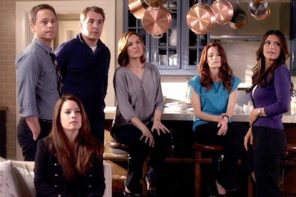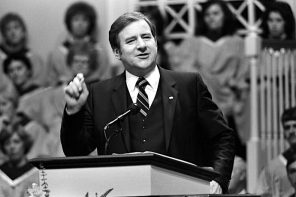Here’s a piece that will, and should, interest a lot of RD readers: “A Religious Legacy, With Its Leftward Tilt, is Reconsidered,” available online and in the July 24th print edition.
Jennifer Schuessler, who covers the academic beat for the New York Times, discusses the resurgence of scholarship on people long since thought to have been dead and passed from the scene: dead, (mostly) white, mainstream/liberal/mainline/ecumenical Protestants.
In assessing the roots of a surge of work on 20th-century liberal Protestantism, including works such as Matt Hedstrom’s The Rise of Liberal Religion, Jill Gill’s Embattled Ecumenism, David Burns’ The Life and Death of the Radical Historical Jesus, and Elesha Coffman’s The Christian Century and the Rise of the Mainline, the article notes:
The surge of interest in liberal religion, many say, reflects the renewed vitality of religious history more generally, which has spread beyond its traditional redoubts in divinity schools to become one of the most popular specializations among academic historians, according to the American Historical Association.
Some scholars say that frustration with the perceived cultural and political dominance of evangelicals in the Bush era gave the subject extra urgency.
“At the end of the second Bush term, there was widespread interest in thinking about a religious left,” said Leigh E. Schmidt, a historian at Washington University in St. Louis, and the editor, with Sally M. Promey, of the recent book American Religious Liberalism.“The idea was, surely there is something besides simply a secular left.”
That something often does not look very churchlike. The Smith and Promey volume, which collects papers delivered at the Princeton and Yale conferences, includes essays on Bahaism among early-20th-century artists and “the metaphysical liberalism” of the U.F.O. obsessive and cult writer Charles Fort, among other far-flung subjects.
Conservative believers “may think this isn’t religion,” said Jon Butler, a Yale University scholar who is working on a history of religion in modern Manhattan. “But religion comes in an incredible number of forms.”
The dizzying varieties of American religious experience, scholars say, has roots nearly as deep as old-time religion. At the University of Virginia Mr. Hedstrom teaches a popular class called “Spiritual but Not Religious,” which traces the evolution of American spirituality from the 19th-century Transcendentalists to Alcoholics Anonymous, yoga and “the gospel of Oprah.”
The piece doesn’t mention, but could have (and maybe should have), the appearance of publications such as The Revealer, RD, and others as part of this same phenomenon.
The (seemingly) sudden appearance of the Christian Right in the 1970s—a development long in the making, but one that shot to public attention in the post Roe v. Wade era—spurred a generation of scholars to create a new history of American evangelicalism and fundamentalism.
Schuessler’s piece suggests that it was a counter-reaction to George W. Bush’s two terms that has inspired the renewed focus on liberal Protestants; and then, of course, the election of President Obama, coming as he did from a church that was part of mainline Protestantism (a UCC congregation in Chicago).
That’s surely part of it, but what seems equally likely is the point mentioned by Jon Butler in the article: that American religions come in too great a variety for a single one to hold center stage for too long.




